APPROACHING THE MARKS ON THE AC75
When sailing onboard AC75 boats at over 40 knots of speed, the time to make tactical choices is very limited. Each manoeuvre is studied and prepared both at the simulator and on water
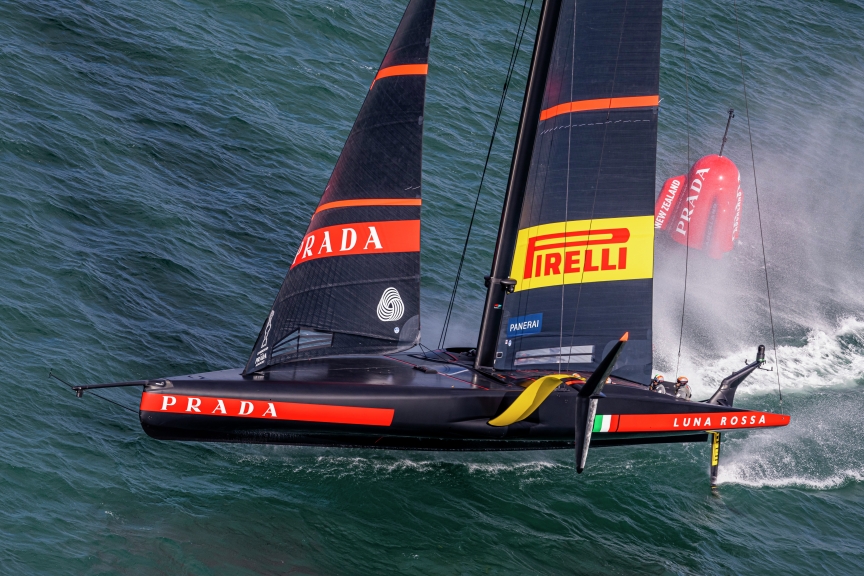
The regattas between AC75 boats, that culminated in the 36th America’s Cup presented by PRADA, have proved to be breath-taking competitions: racing was not just about speed and gains between the boundaries, but showed clever games of coverage, tacks, and approaches to the marks. All these elements together set the scene for a spectacular display or racing skills on the water.
The return to an upwind-start format has provided an extraordinary show at the pre-start, making it one of the crucial phases of each regatta. But it has also been the boat handling on foils to provide an astonishing display of control, with crosses at 40 knots and tacking duels in pure match-racing style.
The truth is that these races, from a strategic and tactical point of view, are very similar to traditional competitions that involve the control of the opponent and the defence of a course side that is more favourable than the other. Time for strategic choices on an AC75 is greatly reduced and decisions are made in a matter of seconds. For this reason, each team has put long hours of training on the water and at the simulator, testing all conditions that could arise in a race and creating a sort of playbook with a list of possible manoeuvres to handle them.
In AC75 races the boundaries define the racecourse. The boats are required to race down several laps, from the start, to the upwind and the downwind gates which are defined by two marks that can be rounded on port or starboard. The rules state that the inside boat has the right of way.
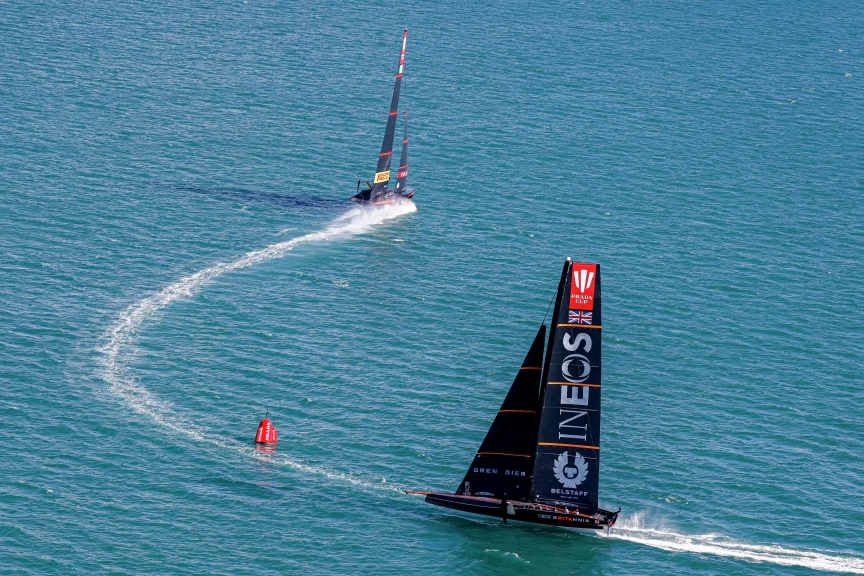
When approaching a mark, there are some pre-determined manoeuvres simulated during training. These are applied, based on the circumstances, such as the boat’s position compared to the opponent or on the strategy required for the next leg.
When approaching the upwind mark there are three main manoeuvres.
The normal bear-away, in which the boat reaches the layline, bears away and sails towards the downwind gate.
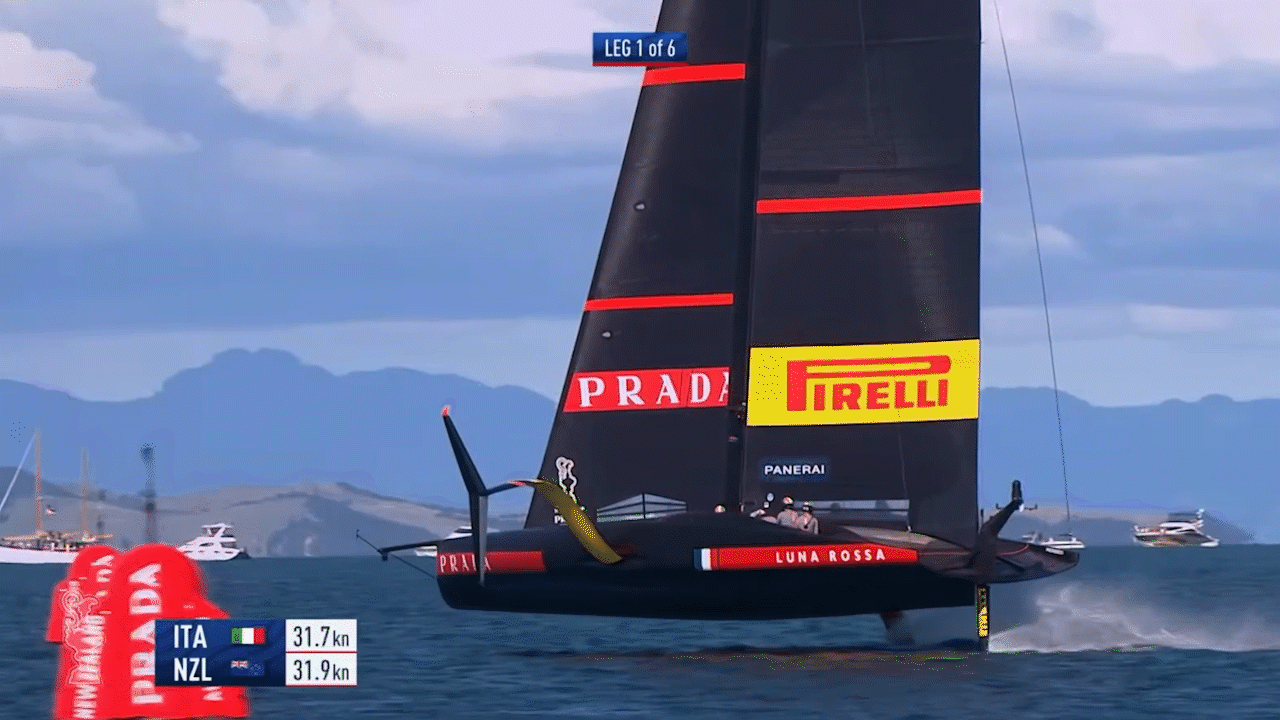
In some circumstances, it is possible to execute manoeuvres that include a jibe soon after the bear-away. This is what is called an early jibe or a Chicago if the jibe is very close to the mark. It is a risky option in conditions of light wind because, in the matter of seconds, the boat moves back into its own bad air.
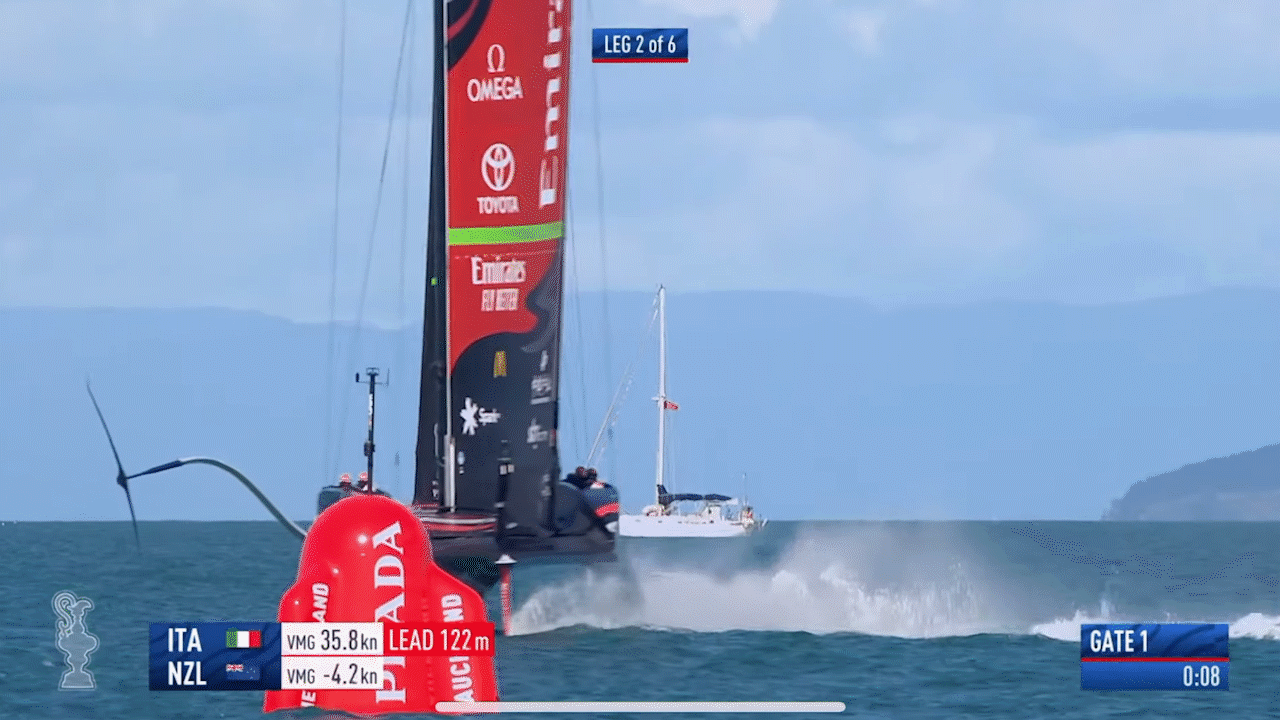
The tack bear-away instead is a typical situation in which the boat reaches the layline on the mark, in which the opponents have already reached the inside position on the mark, which makes it necessary to tack as soon as possible to reach the other mark, bear –away, and return on the downwind leg. This choice comes at a cost; sometimes it is justified by the gains that can be made in the next leg. There are several ways to execute this technically, depending on how close the boat is to the mark: it can be a single manoeuvre or a tack and then a bear-away.
On the downwind leg the situations are very similar, and the correct choice in the approach is always driven by position of the boat with respect to the wind or its opponent.
In most cases the choice is a normal round-up which is one of the fastest manoeuvres. The boat reaches the mark at a high speed and exploits the momentum to round the mark in high mode and gain meters and an increased VMG.
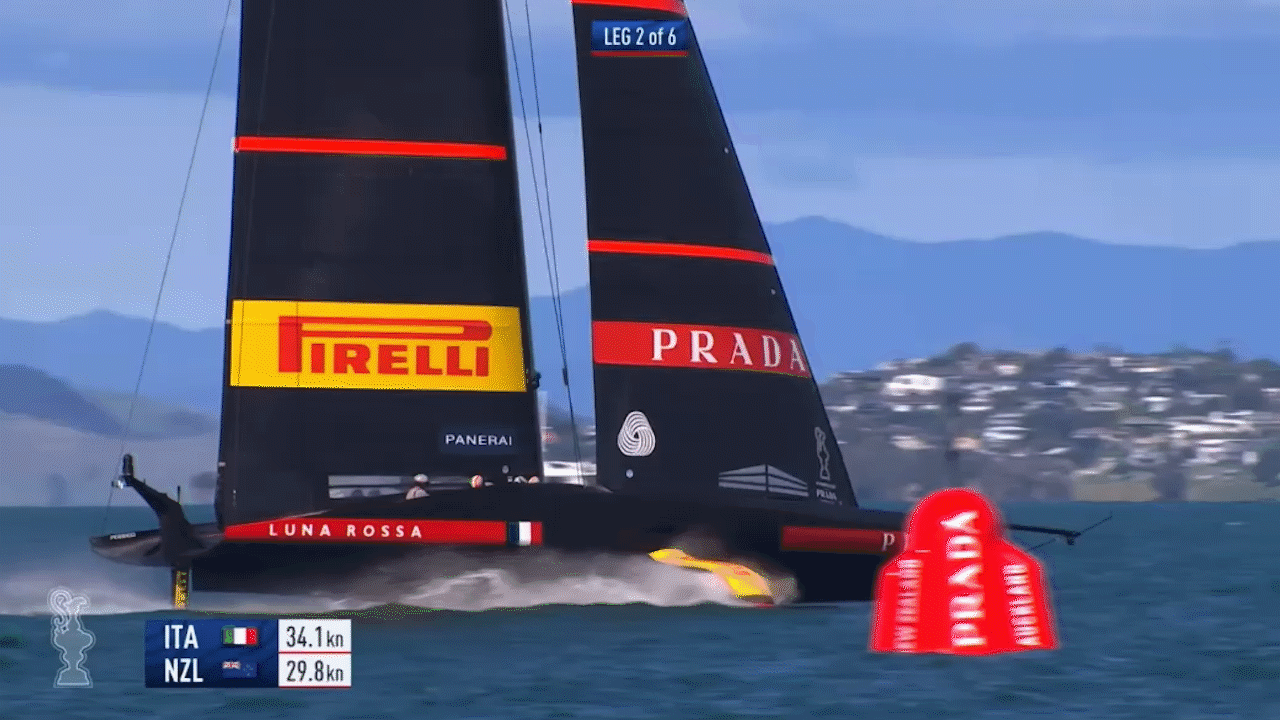
At the downwind gate, it is possible to execute a manoeuvre that all teams refer to as the JK or round-up tack. It is quite complex and generally used to create a split from the opponents or to take immediate control of a more favourable side of the racecourse. Often it is executed at speed, keeping both foils in the water.
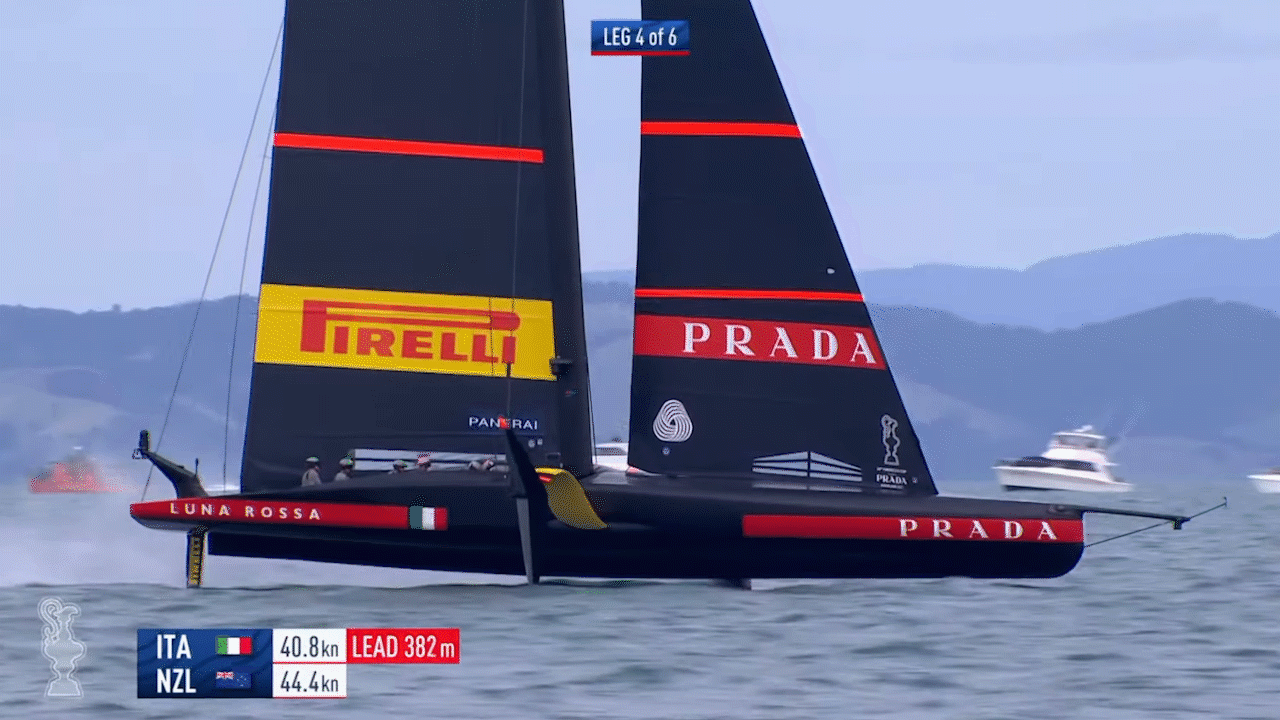
A further option, when approaching the downwind gate, is the jibe round-up, which is similar to the tack bear-away. It is performed when the boat is on the lay line but decides, at the last minute, to round the other mark, either to split from its opponent or to cover a side of the course with higher pressure. During the execution, the boat rounds the mark more slowly compared to a normal round-up. It is essential therefore to weigh carefully how much this choice can be of benefit.
As a rule, the goal is to always opt for a clean manoeuvre, planned in advance.
Any mistake is a gift for the opponents, which is why all manoeuvres are executed to perfection and tested with the simulator and on the water.